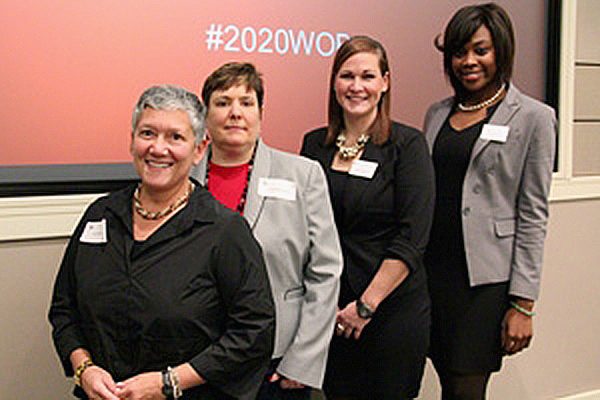Kogod School of Business MBA candidates Laura Denton and Danielle Hart spent nearly 4 months gathering and analyzing data on the demographics that make up 208 publicly traded companies in Maryland, Virginia, and Washington D.C. Their number crunching results found and noted how many women serve—or don’t serve—on each board.
With the guidance of Kogod professor Jill Klein and the Women in Technology nonprofit, the MBA candidates successfully described change in the region’s corporate structure and while also highlighting the need for more.
“We were literally going company by company—for 208 companies—double- and triple-checking every name and every board position,” Denton said. “It was very tedious and monotonous, but we got through it and that’s when the story really emerged.”
What the studentst found surprised them: While the percentage of women on corporate boards in the region is slightly increasing—10-percent in 2013 compared to 9-percent the year prior—the number of boards with more than one woman had changed very little.
“Laura and Danielle really moved beyond the basic count [with their study] and thought outside the box as far as impact,” Klein, their professor, said. “Critical mass is a very important index and one that I’m sure we’ll continue to track moving forward with the study.”
When Hart and Denton presented their findings to WIT earlier this month, they had achieved their research’s primary goal: starting a conversation about the numbers.
While Klein noted that it would have been easy for her students to walk away discouraged from their finding and with doubts about their own futures in corporate America, the professor found that instead her students found a new sense of purpose. And that, to Klein, is why she gets her students involved in the study.
“Despite the lack of critical mass on boards, we did see an increase in women on boards and that’s the positive to the study,” Klein said. “My goal…is to really get them to see that more women are prepared to be on boards now than ever before.”
